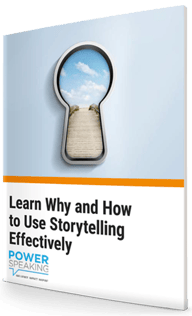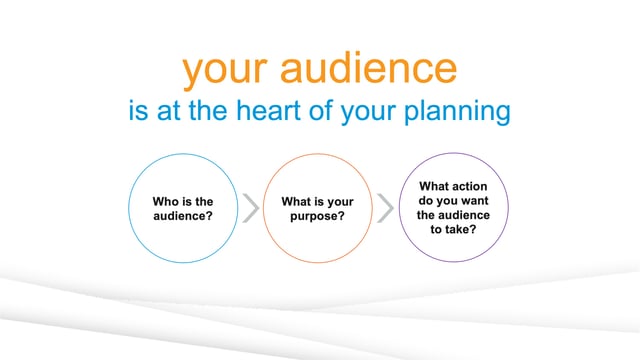.jpg?width=708&height=472&name=iStock-1385901073%20(1).jpg)
I want to tell you a story about the importance of connecting as humans at the start of a meeting.
In May of 2022 our executive team gathered to talk about budgets. I was so deep in task mode when the meeting started, that I dove immediately into the topics at hand.
Throughout the meeting, I had this vague sense that people didn’t seem as engaged as they usually were. Finally, toward the end of the meeting, I stopped and commented, “It feels like there’s unusually low energy here today. Am I right?”
After a pause, our President Mary McGlynn said she just couldn’t concentrate because of what had happened the day before.
What had occurred was the tragic mass shooting at Robb Elementary School in Uvalde, Texas.
Of course it had been on my mind, too, but I was in work mode. Suddenly, I realized what a mistake I had made in not taking five minutes at the start of the meeting to connect. I opened up the conversation and we spent the next 30 minutes sharing our thoughts and feelings.
Afterward, we moved on to the work at hand and had a productive meeting.
If, instead of telling you that story, I had opened this blog by simply saying, “It’s important to make time for connecting on a personal level in meetings” and left it at that, would you have been as moved or persuaded? Probably not.
That’s because authentic, relevant stories are often the most powerful communication tool we have, in business and in life. Yet, it’s only been relatively recently that the business world has recognized that effective storytelling is not only appropriate in the workplace, but also, is a communication skill everyone in the organization should develop.
In this blog, we’ll look at a bit of the research and several best-practice tips we share in our Powerful Storytelling™ workshop to get you started. And if you’d like to learn more, there are additional resources listed at the end.

Don't have time to read the whole guide right now?
Let us help you succeed with our proven tips for Learning Why and How to Use Storytelling Effectively. Get the PDF version that you can save to your desktop and read when it's convenient for you.
(Direct Download, No form required):

Contents
What Makes Stories So Powerful?
We all know how fun it is to hear a story told well, and how we remember meaningful tales months, sometimes years later. But why is that?
Turns out, no matter the setting, good stories have a greater impact on us than, say, technical data alone, because of some universal facts about brain chemistry, evolution, and human behavior. In a recent PowerSpeaking Live!, Master Facilitator and Coach Isabel Walker shared a fascinating description of the science behind storytelling.
I love Isabel’s point that humankind has been hard-wired to rely on stories for eons, to pass on life lessons and to ensure our survival. No wonder we have such deep reactions to them!
I’d like to elaborate a bit by looking at what the best stories do, whether you’re in a virtual meeting or presenting at the office.
Great stories . . .
Capture our attention from the start by tapping into common interests or emotions, citing a surprising fact or event, or introducing us to a character or situation we relate to.
Educate us by providing information we can use and sparking a desire for more.
Entertain us by presenting characters, actions, and solutions that engage us and make us curious about what’s coming next.
Are brief and have a satisfying flow of information and events, which quickly help us understand the core message or moral of the story.
Are memorable because the content is vivid and relatable on some emotional level.
Inspire action, whether that be a sale; a budget decision; or buy-in to a new idea, project, or initiative.
While telling an engaging story among family and friends comes naturally to most of us, we often feel at a loss when it comes to using them at work.
What helps is to first know your audience, then to use a proven story structure to craft the content.
Know Your Audience
It’s always best to start with your audience in mind.
Here are some key questions to consider to help you tailor your story in a way that resonates with your audience:

A few more tips for keeping your audience in mind . . .
Choose universal references - If you have a diverse audience, select stories that aren’t too culture-specific. Instead, choose universal themes and details. For example, a story anchored in American baseball trivia probably wouldn’t go over as well as one about what children learn from playing games.
Never lead with a story in the C-Suite - Senior executives are a time-crunched, impatient audience, and they want you to get to the point. In that same PowerSpeaking Live! conversation about storytelling, panelists Paul van der Lingen and Isabel Walker explained how to use storytelling with executives . . .
Paul is so right in pointing out that if you’re presenting to executives, the timing of your story is as critical as its brevity.
Once you’ve analyzed your audience, it’s time to organize your story.
How to Structure a Story
If you’re going to tell a story at work, it should do more than simply entertain. It has to have a purpose and a point. It needs to be brief. It must be audience-centric. And typically, the goal is to inspire some kind of action from the audience, whether it’s a change in perspective or buying into a project.
In our Powerful Storytelling workshop, we present a story-building framework tailored for business, which includes these four basic components: Context, Challenge, Choice, and Result.
Each story component consists of a series of strategic questions that help flesh out the content.

To illustrate how it works, let me spin a hypothetical story about a medical supply company that pulled together to overcome the challenges of the Covid pandemic, as told by the CEO during an all-hands meeting in the fall of 2020:
Context
“Six months ago the world as we knew it came to an end. Collectively, we were thrust into shelter-in-place mode. Our business, and our personal lives, were turned upside down.
Challenge
Within a month, the doctors, nurses, and healthcare professionals who rely on our products to treat gravely ill patients were staring at empty supply cabinets. The virus that slammed the brakes on our supply chain was preventing us from meeting our commitments to clients in what was literally a life-or-death scenario.
Choice
In those early days, we had few options. But as the weeks and months went by, I watched as every employee in every department of our company threw themselves into finding ways to break through supply-chain barriers. I have never seen such passionate, compassionate genius in action. In every corner of our business, you brainstormed, collaborated, worked long hours, and unearthed innovative solutions. Most important, you refused to give up in getting our products to the people who desperately needed them.
Result
And here we are, six months later, still fighting the good fight —and as you know, we’ve made a difference. Our clients’ supply shelves are filling up again; and you’ve no doubt read the letters I’ve shared from medical center staff who are so grateful.
So, thank you. I know it’s still hard, we’re all tired, and there are a lot of unknowns ahead. But I’m confident we’ll survive and thrive, and here’s why . . .
Because you’ve all set a standard that burns like a torch lighting the difficult path we’ll keep walking together.”
Context, challenge, choice, and result. It’s a process that will help you organize your thoughts and create a story that informs and inspires.
Adopt a Storytelling Mindset
One of the best ways to use storytelling more effectively at work is to always be on the lookout for them, and capture them for future use.
In that same PowerSpeaking Live! conversation, both Isabel, Paul, and panelist Mark Fleischer described so well why and how to tap into not only stories from your own life, but also, from those around you.
I appreciate the point they all made, that everyone has stories to tell whether they realize it or not. So, find a way to use them that works for you!
If you’d like some tips on how to find and use stories, check out our blog:
“Business Storytelling: Collecting, Cataloging, and Calling Forth a Narrative”
Final Thoughts
At the end of the “Powerful Storytelling” PowerSpeaking Live!, I asked our panelists for a final tip. I love their short, but valuable responses.
Isabel pointed to the powerful effect of body language and emotion, Mark Fleischer talked about the value in recording yourself, and Paul suggested we all stay curious.
I think what I love most about storytelling is how it connects us deeply as humans. It’s not a passing fad because it’s literally part of our DNA.
So, remember that in one way or another you grew up on stories, and that they’re all around you now, for the taking.
Here are a few more blog posts that will help you become a better storyteller:
“Does Your Voice Tell a Good Story?”
“Engage Your Audience With Powerful Storytelling Techniques"
Carrie Beckstrom






.png)


